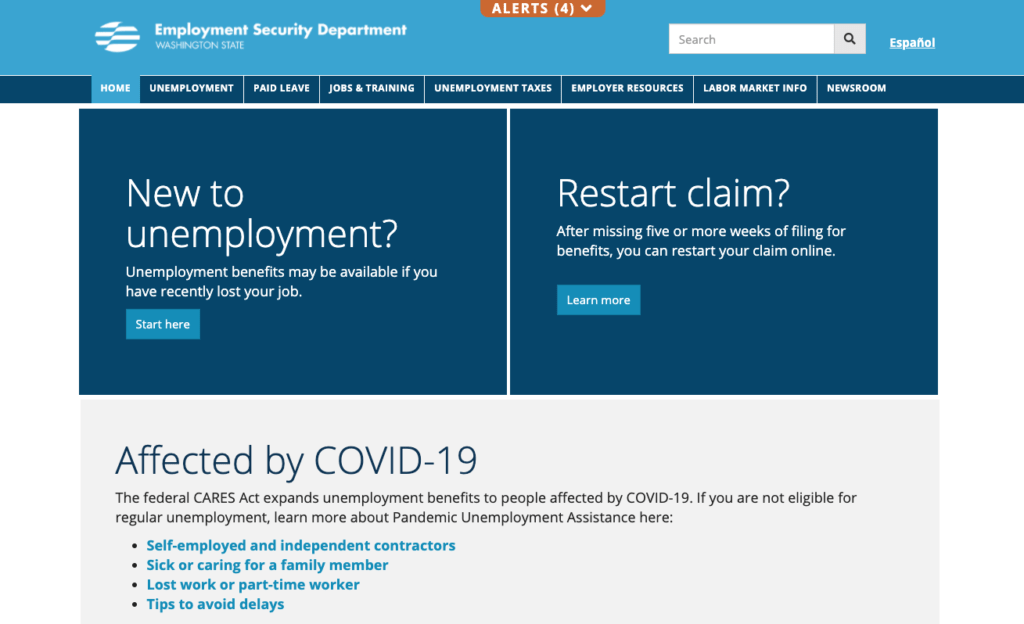SEATTLE — Federal pandemic assistance may be officially ended, but it could be months before Washington’s unemployment system returns to anything resembling a pre-COVID-19 normal — especially for the thousands of people still awaiting benefits.
Last week brought the first big drop in benefits paid under two expiring federal pandemic programs: 18,016 Washingtonians received $11.3 million in federal pandemic unemployment assistance, down from the 137,811 who received $133 million the week before, the state Employment Security Department said Thursday.
Washington also saw fewer new claims for regular unemployment benefits, the ESD reported. The 4,850 initial claims filed last week marked a 0.2% decrease from the prior week and a 8% drop versus the same week in 2019, according to the ESD’s claims database. Nationally, unemployment claims rose nearly 5%, to 351,000.
But Washington’s unemployment system isn’t out of the woods.
Although pandemic assistance has officially expired, ESD staff expect to see a trickle of new pandemic claims over the weeks ahead and will also be working to resolve any pandemic claims that get hung up in the system.
“There’ll be a lot of workload over the next several months to close out the [pandemic] programs and make sure that everybody got all the benefits they were entitled to,” ESD spokesperson Nick Demerice said.
More broadly, ESD officials hope the decline of pandemic claims, which tended to be more complicated to review, will make it easier for the agency to work through other claims backlogs.
The number of claimants who have been waiting for three weeks or longer for ESD to resolve a problem claim has fallen from around 9,400 in March to fewer than 6,000, Demerice said. The average wait time to resolve a delayed claim is around 10 weeks, Demerice said, little changed from earlier this year.
ESD is also dealing with thousands of Washingtonians who are appealing claims ruled ineligible by the agency. As of last week, the ESD had a queue of around 28,000 appeals requests, Demerice said.
An additional 25,320 Washingtonians have appeals pending with the state Office of Administrative Hearings as of last week, said Rica Helberg, an internal compliance auditor at OAH.
The average contested claim took 23 days to get through ESD’s appeals review and an additional 138 days to be heard at OAH. That’s an improvement from 27 days and 140 days, respectively, as of Aug. 16.
Employers, meanwhile, hope the end of pandemic benefits spurs a surge of job applicants and helps end a labor shortage that has dragged on the state’s recovery.
In August, the state added 16,800 jobs, compared to 24,300 jobs in July and 25,600 in June, the ESD reported last week. The slowdown in August came as Washington saw an increase in COVID-19 cases, but employers appeared to be constrained, in large part, by a lack of labor, said Paul Turek, ESD’s state economist.
How the expiration of pandemic benefits affects the state’s labor market may take months to fully assess.
But in the meantime, the programs’ end raises new potential challenges for Washingtonians. There are the social impacts from the who are no longer receiving those federal benefits.
Washington also has fewer resources if the still-active pandemic produces another big round of layoffs this fall or winter.
A surge in COVID-19 cases from the delta variant or some other variant could “potentially lead to more businesses closing down temporarily or in some cases permanently,” which could “potentially lead to more rounds of layoffs,” said Jacob Vigdor, an economist with the University of Washington Evans School of Public Policy who has studied the Seattle-area labor market.
But where the damage from earlier rounds of layoffs was blunted by pandemic unemployment benefits, which brought nearly $16 billion to Washington alone, that safety net is no longer available, Vigdor said.
“In a world where we don’t have the federal assistance … how does everything hold together?” Vigdor said. “The answer is, it would not be the same.”



